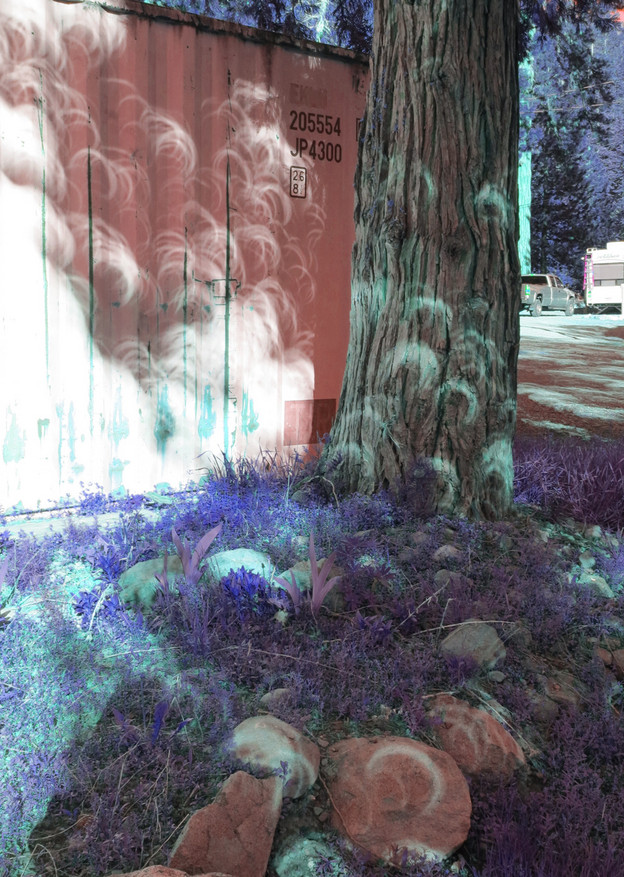Magical correspondences, part 3 of 6

What follows is part three of six written exchanges between me and Andrew Joron about poetry and science in 2012. Joron’s creative and critical work have been highly influential to me. When I contacted him after The Poetry Foundation’s Harriet blog ran an article,“From the Golden Age of San Francisco Science-Fiction Poetry to the New Age of Quantum Poetics,”about our shared interest in poetry and science, he generously responded to my poetry and speculative essays on quantum poetics published on Poems and Poetics. Joron and I have decided to present our conversation here for Jacket2.
See also parts one, two, four, five, and six.
* * *
Hi Amy,
I think we are striving, in our thought & practice, for the same thing: to use language to approach X the unknown. You’re right to discern in my last response some of the moves of a diehard Romantic, despite my criticism of the “pathetic fallacy.” I find there’s also a “sense of wonder”in Romanticism that redeems the movement for me.
Wonder is the one, primary affect that conjoins science and art. I think you are getting at this also when you write of the “alienation” that results from an encounter with the inhuman-ness of the matrix, and of wanting “a kind of reclamation toward alienation” through poetry. I think this is right, though I’d probably use the term estrangement rather than alienation. The latter term connotes for me disempowerment and exile—as in the imposition of a rift between subject and object—whereas the former implies an incitement to wonder. But I’m sure we share the same impulse, to have (poetic) language join science in moving toward an encounter with X.
For you, as both science and poetry are moving toward this X, what (quantum) science discovers there turns out to be congruent with what poetry discovers. But I worry that, in quantum poetics, this X has already been defined by quantum mechanics. You & I are both fans of Lisa Randall; we’ve been inspired by her exposition of QM. But what would Randall learn if she came to our work? Not simply that poetry was saying or doing something similar to QM. I think she would learn, to paraphrase something you said, that language can travel faster than light, that poetry breaks the law in a way that science cannot. In QM, science has had to reconcile itself to uncertainty, but that uncertainty is contained within strict parameters. Quantum objects may be indeterminate, tunnel through walls etc., but the laws that describe this behavior are invariant & precisely formulated, i.e., the laws don’t participate in the behavior they describe. The form of science is nomological (law-driven), whereas the form of contemporary poetry is disruptive, breaking the law in order to say the unsayable.
Still, like you, I am drawn toward contemplating a sort of unified field theory in which the real affinities between science & poetry could be articulated. And I think you have gone a long way, in your thought & practice, toward this articulation (with your concept of the matrix, etc.), to the point of actually incorporating scientific ideas into your poetry. Unlike Language poets, who incorporated post-structuralist theory in a way that ended up weighing down their poetry, your work—now that I’ve had a chance to engage with it—does with/to science what science won’t allow itself to do, namely wail out formally. (“though to liberty / everything lunatic can happen”)
This can happen, I feel, because of your commitment to the clinamen, a purely poetic move that has no clear analog in QM—indeterminacy itself is not a swerve, but only a state to which no value can be assigned, a state of pre-measurement that, when measured, collapses into determinacy. The swerve, by contrast, is a strong & visible value, a mode of action that things have; though it is not determined by anything, it is not in itself indeterminate. I see the swerve as the key component of your poetic work. Here is where reality and language meet: not at the (all-too-lawful) collapse of the wavefunction, but at the moment of the swerve.
* * *
Andrew Joron is the author of Trance Archive: New and Selected Poems (City Lights, 2010). Joron’s previous poetry collections include The Removes (Hard Press, 1999), Fathom (Black Square Editions, 2003), and The Sound Mirror (Flood Editions, 2008). The Cry at Zero, a selection of his prose poems and critical essays, was published by Counterpath Press in 2007. From the German, he has translated the Literary Essays of Marxist-Utopian philosopher Ernst Bloch (Stanford University Press, 1998) and The Perpetual Motion Machine by the proto-Dada fantasist Paul Scheerbart (Wakefield Press, 2011). Joron lives in Berkeley, California, where he theorizes using the theremin.
Quantum poetics